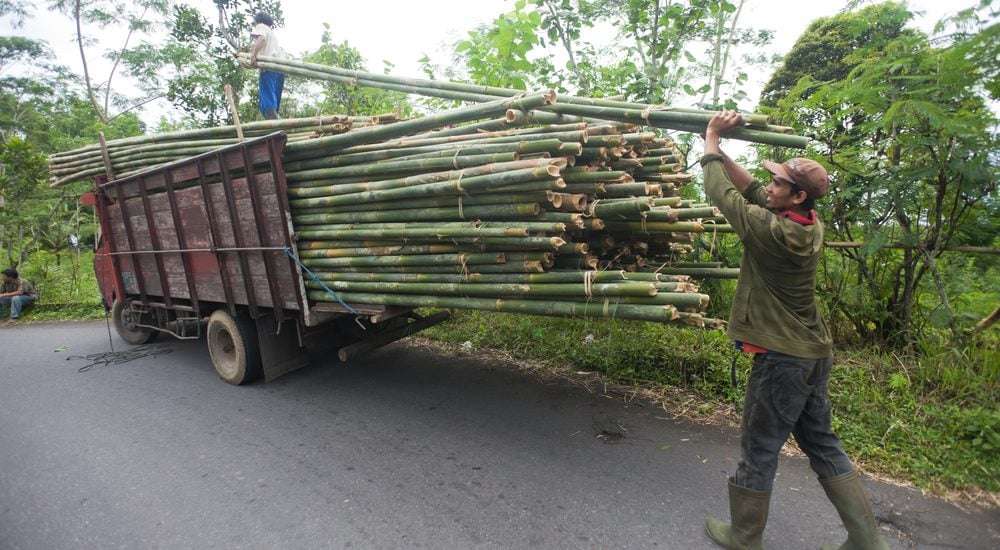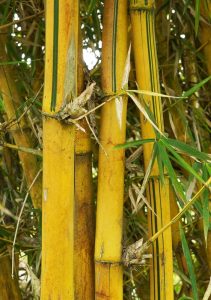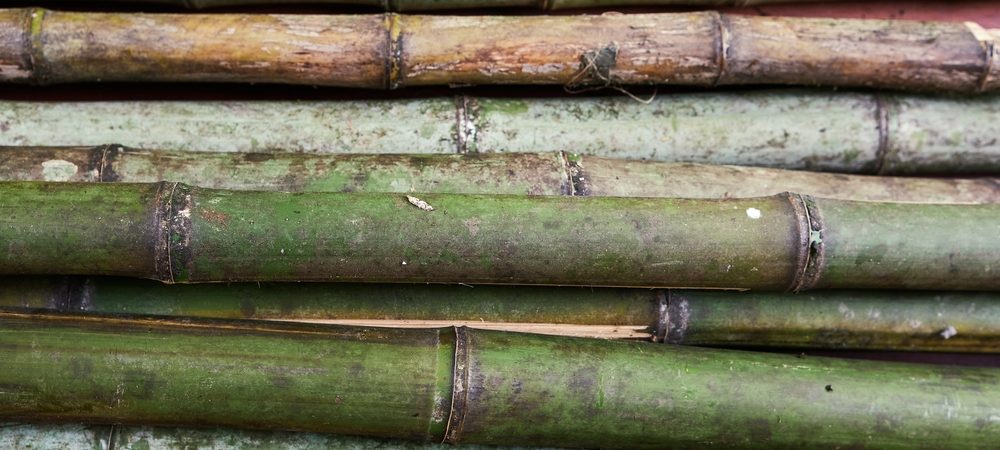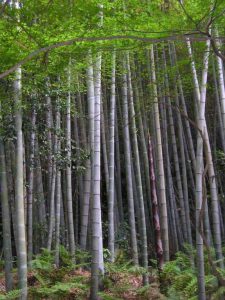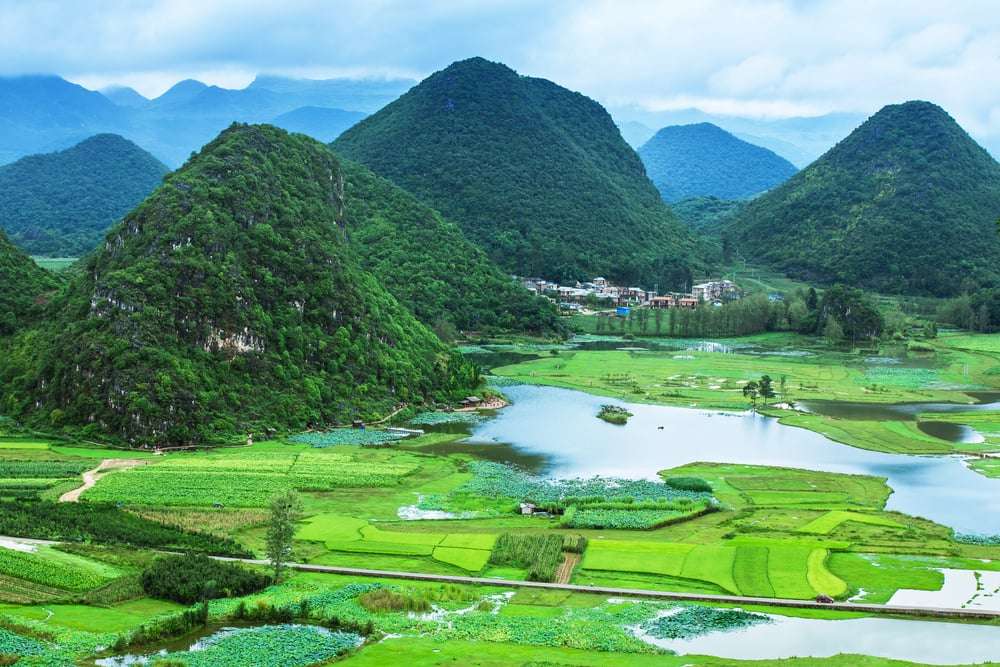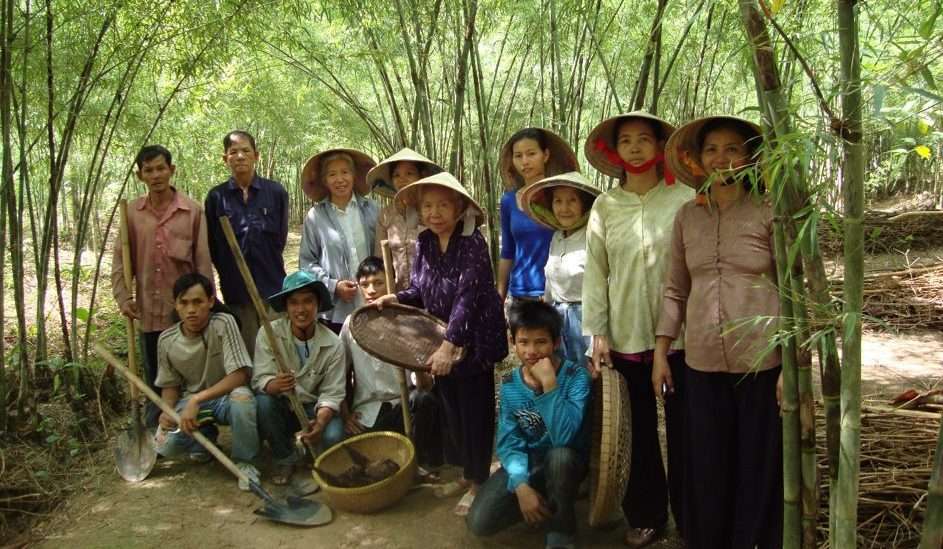Bamboo is a unique resource known for its toughness and rigidity. While it may represent wood, bamboo is actually considered to be a type of grass. It’s also the world’s fastest-growing plant.
Bamboo’s rapid growth rate and exceptional durability have made it a hot commodity among exporters, and it’s now used to create a whole array of construction materials. However, indigenous peoples began using bamboo for a variety of use cases long before the first stalk of this fast-growing grass was ever shipped across the ocean.
Today, indigenous and local communities continue to use various types of bamboo to improve their quality of life. Its uses not only include constructing household goods and building materials, but it’s also been found to play a pivotal role in water and soil management, as well as general resource conservation.
Join us as we explore the different bamboo classifications, discuss the importance of growing bamboo, and examine the connection between these grass sub-species and sustainability.
Common Types of Bamboo Plants
While experts cannot settle on a specific number, the majority of researchers agree that there are approximately 1,000 different types of bamboo plants around the globe. Naturally, listing out all of these different plants here is impractical. But there are certain types that are more prevalent than others, which include the following:
Bambusa Vulgaris
Bambusa Vulgaris is also known as “common bamboo.” This is because it is perhaps the most widely cultivated type of bamboo in the world. If you’ve come across bamboo in a local garden or your neighbor’s yard, it was probably common bamboo.
Common bamboo is popular because it is highly adaptable, easy to grow, and easy to maintain. It can flourish in a broad range of environments and is known for its yellow appearance. Like pretty much every other type of bamboo out there, common bamboo grows rapidly.
Guadua
Native to South America, Guadua bamboo falls into the giant timber bamboo family. This bamboo is named as such for its timber-like qualities. As you might expect, timber bamboo like Guadua is excellent for creating construction materials like flooring.
Guada is considered to be stronger than any other bamboo. It is also the third biggest type of bamboo in existence. A few other names for Guada include American Narrow-Leaved Bamboo, Colombian Giant Thorney, and Colombian Timber Bamboo.
Guadua can grow to heights between 15 and 30 meters — approximately 50 to 100 feet. Its stalks range from 7 to 18 cm in diameter. This type of bamboo flourishes in tropical and subtropical climates.
Moso
Phyllostachys Edulis — more commonly known as Moso bamboo — has characteristics very similar to those of Guadua. Moso is a type of evergreen bamboo, which means that the stalks maintain their green appearance year round. As Moso matures, the stalks will transition from a yellow-green to an orange-green color.
At the height of its growth cycle, Moso can grow as much as three feet in a single day. Moso will experience this rapid growth during warm weather conditions. However, it will experience little, if any, growth during cool temperatures.
Mature Moso ranges in height from 7 to 18 meters, about 25 to 60 feet tall. Especially robust stalks of Moso bamboo can grow to 75 feet tall or more. Moso can reach diameters of up to 7 inches.
Like Guadua, Moso is widely used for commercial purposes. It can be used to create plywood, bamboo flooring, and other products typically made from wood. Moso is used to create paper pulp as well. The shoots are even edible and quite popular among locals when properly prepared.
Moso is extremely easy to cultivate and can even become invasive if left unchecked. Its fast growth makes it a great option for replacing slower-growing timber sources.
Where Are Different Types of Bamboo Found?
Bamboo can be found in dozens of nations throughout the world. Primarily, bamboo is found in subtropical and tropical climates, like South and Central America, India, and southern China. The latter is home to the most diverse array of bamboo species. There are almost 500 different species of bamboo found in China – most of which are located to the south of the Changjiang River.
In addition to these naturally occurring locations, bamboo is also cultivated in a number of climates around the world. Several organizations grow bamboo in the United States for commercial purposes; Moso bamboo in particular has become a popular building material in the States. Companies that grow bamboo domestically typically build cultivation sites in subtropical regions, such as southern Florida.
Bamboo Uses
As mentioned, bamboo is commonly used by indigenous peoples and material manufacturing companies worldwide. That and other use cases have proved to be perfect for bamboo.
Traditional and Yunnan Uses
For centuries, native peoples have used different types of bamboo for many purposes. The versatility of bamboo is on full display in these communities, as indigenous peoples have developed a robust knowledge of these plants.
Communities such as ethnic minorities in the Yunnan region have fully embraced the world’s fastest-growing plants. This comes as no surprise, especially when one considers that approximately 250 different species of bamboo natively grow in this region.
Individuals in this southwestern Chinese province rely on bamboo to create their shelter. They also eat the aforementioned bamboo shoots. However, these are only a few examples of ways that the Yunnan peoples use bamboo to improve their lives.
Additionally, Yunnan communities craft shoes and hats from bamboo. They also use bamboo to make cooking and eating utensils. Other use cases include making bamboo rafts and bridges, creating farm tools, and even crafting chairs, tables, and containers.
Natives living in this rural region of China will frequently plant bamboo fields near their homes. They may also plant large quantities of bamboo on the outskirts of the village to ensure that they have a sufficient supply of this versatile resource.
Researchers found that Yunnan communities not only use bamboo to create essential items and tools, but they also use them for medicinal purposes. Approximately 100 of the 250 types of bamboo found in the Yunnan region yield edible shoots. These shoots provide Yunnan villagers with a valuable source of nutrition.
Specifically, edible bamboo shoots contain vitamins, minerals, amino acids, and protein. Many types of bamboo shoots also contain very little fat. Since these bamboos grow naturally in the Yunnan region, natives do not have to worry about the shoots being contaminated by pesticides or fertilizers.
Modern Applications
Bamboo has not only proven to be an invaluable commodity to indigenous communities, but it also has the potential to replace a plethora of traditional timber products. For example, bamboo can be used to make paper pulp, flooring, and even plywood. Replacing even 10% of traditional plywood with bamboo could have tremendous implications for forest conservation.
While many different types of bamboo can be used for the aforementioned applications, Moso has proven to be the best option for producing flooring.
The Connection Between Bamboo and Sustainability
Due to its versatility and widespread usage, it’s important to examine the role of bamboo in the push for sustainability and environmental conservation. Specifically of note are its harvesting processes, replenishment rates, and endangered status.
Harvesting Processes
When trees are harvested for their wood, the entire structure must be cut down and milled. Depending on the type of tree, it may take 10, 20, or even 30 years to mature. This means that businesses must plan future harvests years in advance so that they do not exhaust natural resources.
Conversely, most types of bamboo, including Moso, can be harvested without cutting down the entire stock. Instead, harvesters can cut away a segment of the bamboo stock and leave the lower portion of the plant.
Bamboo is not only more sustainable to harvest, but it regrows much more rapidly than trees. Moso bamboo can be harvested three to five years after planting, depending on conditions. After the bamboo reaches maturity, it can be reharvested annually. As a result, bamboo fields will yield a much higher volume of materials than trees.
 Replenishment Rates
Replenishment Rates
Replanting forests takes decades. Therefore, every effort must be made to preserve forests and minimize clearcutting. Transitioning away from traditional timber and using more bamboo offers a viable means of doing just that.
Because bamboo grows in three to five years, if harvesters only cut away a portion of bamboo plants, the remaining portion of the plant can replenish in just a year’s time. This characteristic alone makes bamboo a prime option for furthering sustainability initiatives and preventing deforestation.
Endangered Status
Unfortunately, approximately half of bamboo species are endangered or threatened. Therefore, these bamboo species must be protected and are not good alternative sources for timber or other building materials.
Thankfully, many kinds of bamboo are widely available and have no risk of being placed on the endangered or threatened list. In fact, Moso bamboo has become extremely invasive in some regions. In these areas, Moso bamboo fields should be completely removed so as not to disrupt the normal nitrogen cycling of the soil.
Due to Moso’s invasive nature, the bamboo plant must be grown in carefully controlled environments. Growers must monitor Moso fields and prevent the plant from spreading outside of the designated growth zones. This is particularly important when cultivating and harvesting Moso in areas that have already been negatively impacted by uncontrolled growth.
Benefits of Moso Bamboo vs. Other Types of Bamboo
Despite its propensity to be invasive, Moso bamboo has many desirable qualities that make it an excellent option for creating flooring and plywood. There are some notable benefits of using Moso bamboo for modern and traditional applications, especially due to the following factors:
CO2 Neutral
Moso bamboo produces a significant amount of oxygen and can absorb a large volume of carbon dioxide. When compared to other hardwoods and bamboos, Moso outperforms all of them in this category.
Additionally, the robustness of Moso bamboo makes it an excellent choice for protecting soil, guarding against erosion, and combatting similar environmental concerns. It is also uniquely suited for landscape restoration initiatives. Several communities around the world have already started using Moso and other bamboo species for this purpose.
For instance, Phu An Bamboo Village in Vietnam is a modern bamboo-centric community that is dedicated to improving the biodiversity of this exceptional plant in the Phu An region. Currently, the village is home to over 350 different types of bamboo. The village has a research center, botanical conservancy, and eco-museum.
Researchers are gauging bamboo’s efficacy in treating contaminated soil, carbon sequestration, and wastewater management. While there is much work left to be done, the early results of this research are quite promising.
Durable
From a commercial perspective, Moso bamboo exhibits superior durability. This makes it an ideal material for creating heavy-duty flooring and plywood. Moso bamboo is not only durable, but it also experiences less swelling and shrinkage.
Moso bamboo can be used to make a special type of wood flooring that is two to three times harder than oak. This building material is known as strand woven bamboo flooring.
Moso bamboo is also an ISO 14001 and 9001 certified product. The ISO 14001 certification speaks to the ethical environmental management standards used to source the bamboo. The ISO 9001 certification guarantees consumers that the products made using this material meet or exceed the highest quality standards.
Rapid Regeneration
Finally, Moso bamboo regenerates rapidly. Under optimal conditions, Moso bamboo can grow at a rate of approximately three feet per day. If harvesters only collect mature stems, they can leave the base of the plant unharmed. This means that harvesters can gather resources from the bamboo field in perpetuity.
As you can see, Moso bamboo is not only a dynamic and versatile plant, but it may also hold the key to enhancing sustainability in the milling and wood product manufacturing industry.
Consider Bamboo
For those looking to do their part to protect the environment and conserve natural resources, a transition from traditional wood products to bamboo alternatives is the perfect place to start.

About the Author
Meet Bridgett, your friendly neighborhood green building guru! With more years of experience than she’d like to admit, Bridgett is your go-to expert for all things eco-friendly construction. She’s on a mission to make your home the envy of every tree hugger in town (and maybe even the squirrels 🐿️). Let’s build a greener, funnier, and all-around better world together – one enlightened eco-conscious choice at a time!

